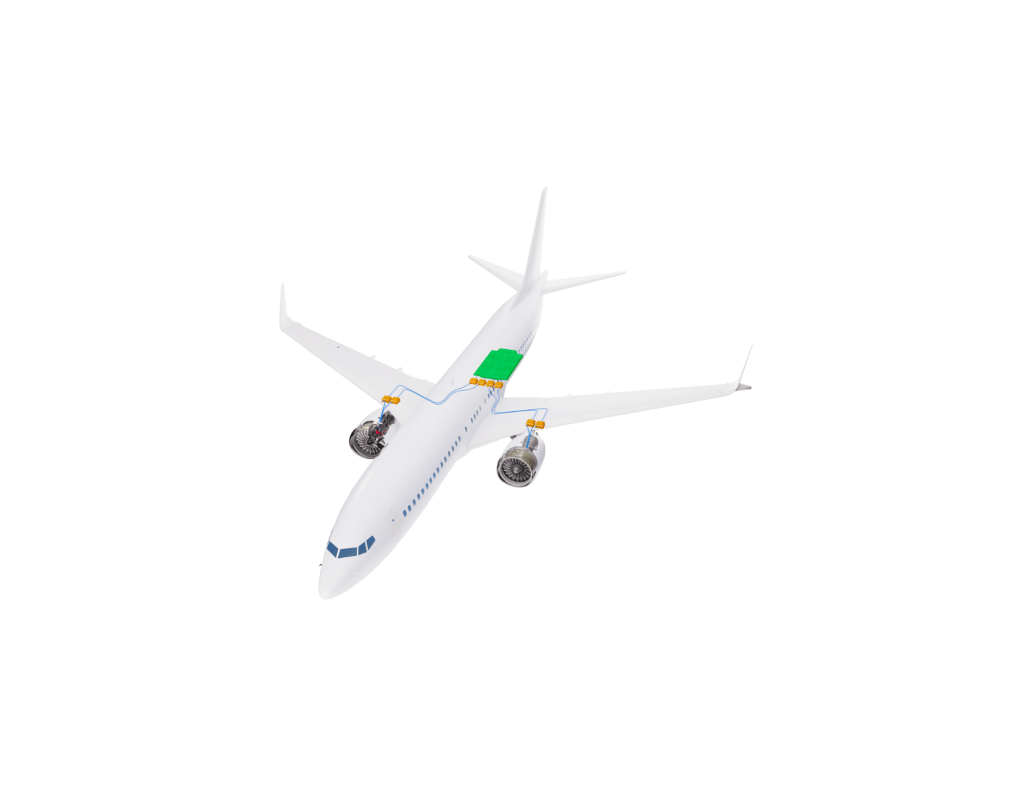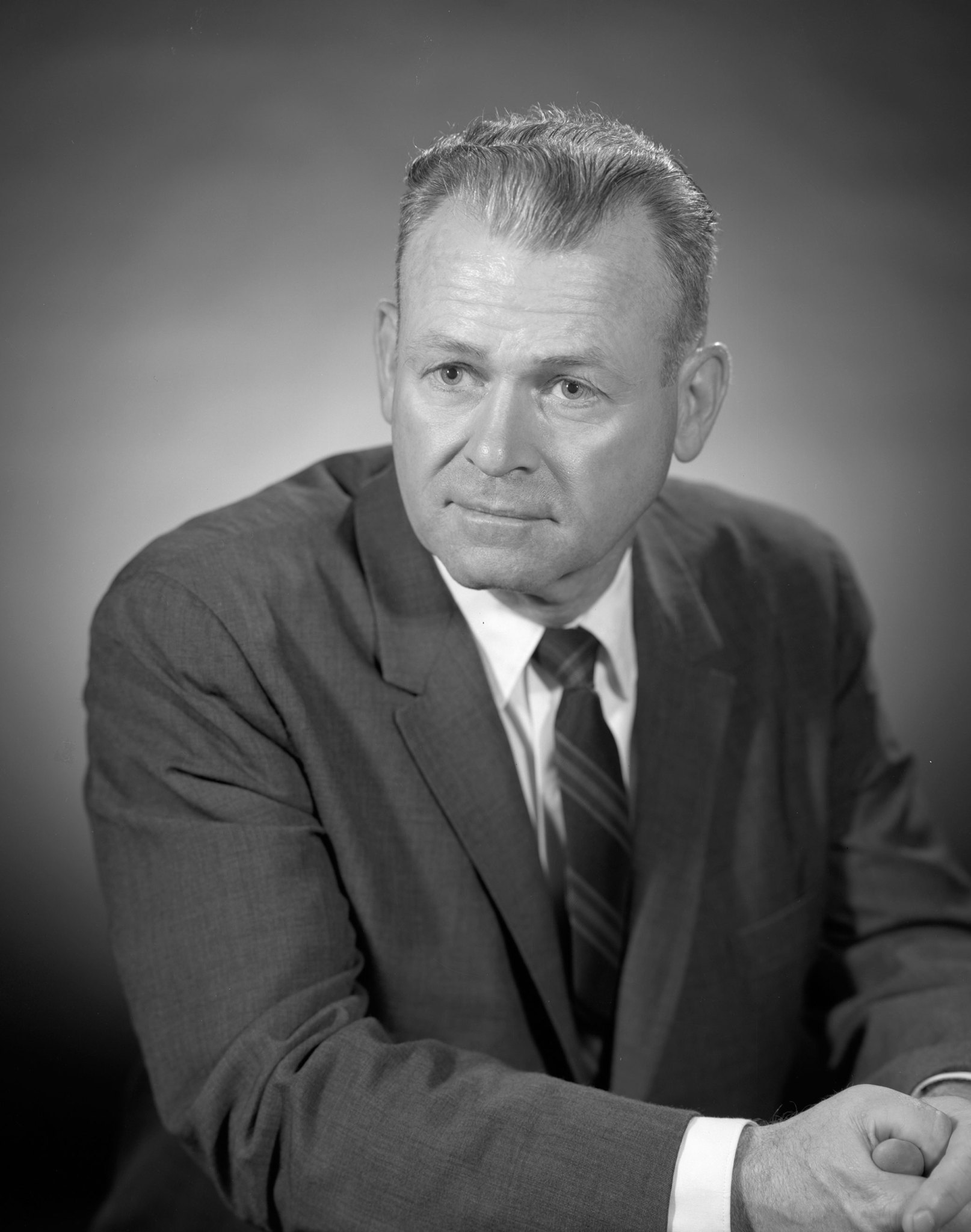Charles J. Donlan
Charles J. “Charlie” Donlan (1916–2011) retired from the NASA Langley Research Center after a 38-year career in which he was a successful researcher, a key manager, and leader who was extensively involved in the development of unique facilities and research techniques, and the formulation, implementation, and direction of technical programs in support of NASA’s manned and unmanned exploration of space.
Donlan was born in Lawrence, Massachusetts, and attended public schools in North Andover, Massachusetts. He received a bachelor of science degree in aeronautical engineering from the Massachusetts Institute of Technology (MIT) in June 1938. He was very familiar with the work being done by the NACA at Langley, and when offered a position by John Victory, Executive Secretary of the NACA, he quickly accepted, arriving at Langley without attending his graduation exercise at MIT. He began his career at the NACA Langley Memorial Aeronautical Laboratory working in the Langley 15-Foot Free-Spinning Tunnel, which had been designed by Charles Zimmerman and built in the mid-1930s. After working in spinning for about two years, Donlan worked with legendary aerodynamicist R. T. Jones for about a year.
During World War II, he was involved in the design and operations of two new Langley 7- by 10-Foot Tunnels, which operated in the same building site. He rose to the position of head of the facility from 1945 to 1952. He made important contributions to solving stability and control problems (pitch-up) caused by swept-back wings of emerging fighter aircraft of that era. Donlan personally conducted the first wind-tunnel examination of variable-sweep wings using a model of the X-1 research airplane. One of his all-time favorite moments during his career was working on evolving aircraft, particularly the Navy’s Chance Vought F8U Crusader. Many of the innovations for the highly successful aircraft originated at Langley, and Donlan was tremendously satisfied by the applications of his research.
In the 1950s, he was very active as a Langley member of the NACA Research Airplane Panel, which ultimately led to oversight of the X-15 research airplane program. He also served as a free-lance technical assistant to Langley Director Floyd Thompson. Thompson wanted Robert R. Gilruth, head of the Space Task Group (STG), to have an exceptional deputy, and Donlan was asked by Thompson to become that deputy. In accepting the job, Donlan moved from the Langley Headquarters building in the West Area to the STG accommodations in the old NACA Headquarters building in the East Area. Gilruth assigned Donlan the task of selecting and training the first astronauts for Project Mercury. Over 600 military service test pilots had applied for the astronaut positions. He also headed the STG team that evaluated contract proposals for Project Mercury, which was won by McDonnell Aircraft.
In 1960, Donlan was requested by Director Thompson to leave the STG organization and rejoin him at Langley Headquarters as Associate Director. He later became Langley Deputy Director in 1967. In interviews after his retirement, he stated that he was extremely impressed by Langley’s success in managing the Lunar Orbiter Project and took personal pride in the project’s success. Later in the 1960s, Donlan personally obtained Thompson’s permission to send Langley’s Axel T. Mattson to the Manned Spacecraft Center for liaison purposes– another action that he was particularly proud of achieving.
On May 1, 1968, at the request of the NASA Administrator, Donlan transferred to NASA Headquarters in Washington, D.C and became the Deputy Associate Administrator for Manned Space Flight (Technical), an assignment that involved responsibility for ensuring the technical excellence of the manned space flight programs as well as a principal role in the conduct of advanced programs studies and in defining operational roles of the manned spacecraft centers. He also served as Director of the Space Shuttle Program during its formative years — November 1970 to April 1973. In his final period of employment with NASA he conducted NASA-wide studies as to how best to operate the Space Transportation System and delegate responsibilities to the Centers.
Donlan retired from NASA in 1976 and became a consultant to the Institute for Defense Analysis (a contractor to the Department of Defense) where he participated in studies involving the potential use of the Space Shuttle by the armed services. He also served as a consultant to several aerospace firms. He served as a member of NASA’s Aerospace Safety Advisory Panel, a Congressionally mandated group established after the Apollo fire in 1966 to exercise an oversight role in reviewing NASA’s programs from a safety perspective.
In his distinguished career, he authored numerous aeronautical and space technical reports and lectured on NASA research and management aspects of engineering and science programs. He received several awards in recognition of his contributions:
- Tau Beta Pi – Honorary Engineering Society – MIT, 1938
- Special Award for Outstanding Leadership – Langley Research Center, 1968
- Outstanding Leadership Medal – NASA Headquarters, 1963
- Distinguished Service Medal – NASA, 1971
- Exceptional Performance Award – NASA, 1976
- Exceptional Service Medal – NASA, 1976
- W. Randolph Lovelace, II Award – American Astronautical Society, 1976
- Eugen Sanger Medal Award – German Aerospace Society, 1977
- Honorary Degree, Doctor of Aeronautical Engineering – Ohio Northern University, 1972
- Fellow – American Institute for Aeronautics
Charlie Donlan died in 2011, at the age of 95, in Williamsburg, Virginia. He was predeceased by his wife Marguerite, and his son Richard, who was killed in Vietnam in 1968. He was survived by his son, Charles J. Donlan II.

























